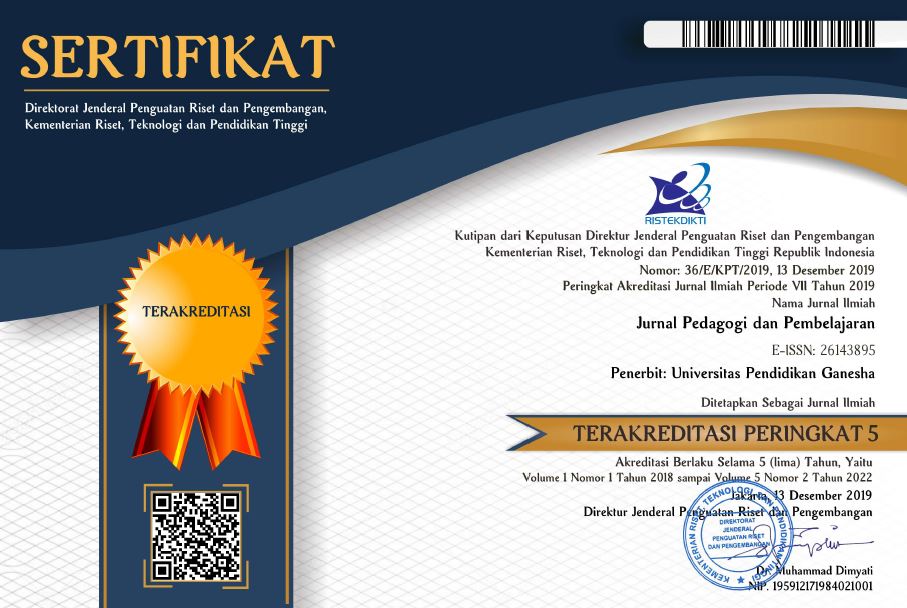Implementation of the Pancasila Student Profile Strengthening Project in Inclusive Schools
DOI:
https://doi.org/10.23887/jp2.v7i2.82424Keywords:
Independence Curriculum, Pancasila Student Profile, Inclusive SchoolAbstract
Facts on the ground show that children are less motivated. Lack of motivation in children is caused by children finding it difficult to implement the Pancasila student profile strengthening project. This study aims to prove the implementation of the Pancasila student profile strengthening project in the independent curriculum in schools that provide inclusive education. This study is a type of qualitative research with a case study approach. The subjects of this study were 1 head of the Foundation, and 1 teacher for grades I and II each. The data collection methods used were observation and interviews. The data collection instruments were observation guidelines and interview guidelines. The data analysis technique used was interactive model qualitative data analysis. The results of this study are that the implementation of P5 activities for inclusive schools can be carried out through 3 stages. So it can be concluded that the planning, implementation, and evaluation of the Pancasila student profile strengthening project are running according to the stages of its development and from the project activities, the planning, implementation, and evaluation processes occur in children. The latest results in this study can have implications for its use as a reference or reading material for consideration in making policies related to the Pancasila Student Profile Strengthening Project, especially for early childhood, especially with children with special needs.
Published
How to Cite
Issue
Section
License
Copyright (c) 2024 Ni Kadek Gita Librayanti, Nice Maylani Asril

This work is licensed under a Creative Commons Attribution-ShareAlike 4.0 International License.
Authors who publish with Jurnal Pedagogi dan Pembelajaran agree to the following terms:- Authors retain copyright and grant the journal the right of first publication with the work simultaneously licensed under a Creative Commons Attribution License (CC BY-SA 4.0) that allows others to share the work with an acknowledgment of the work's authorship and initial publication in this journal
- Authors are able to enter into separate, additional contractual arrangements for the non-exclusive distribution of the journal's published version of the work (e.g., post it to an institutional repository or publish it in a book), with an acknowledgment of its initial publication in this journal.
- Authors are permitted and encouraged to post their work online (e.g., in institutional repositories or on their website) prior to and during the submission process, as it can lead to productive exchanges, as well as earlier and greater citation of published work. (See The Effect of Open Access)









